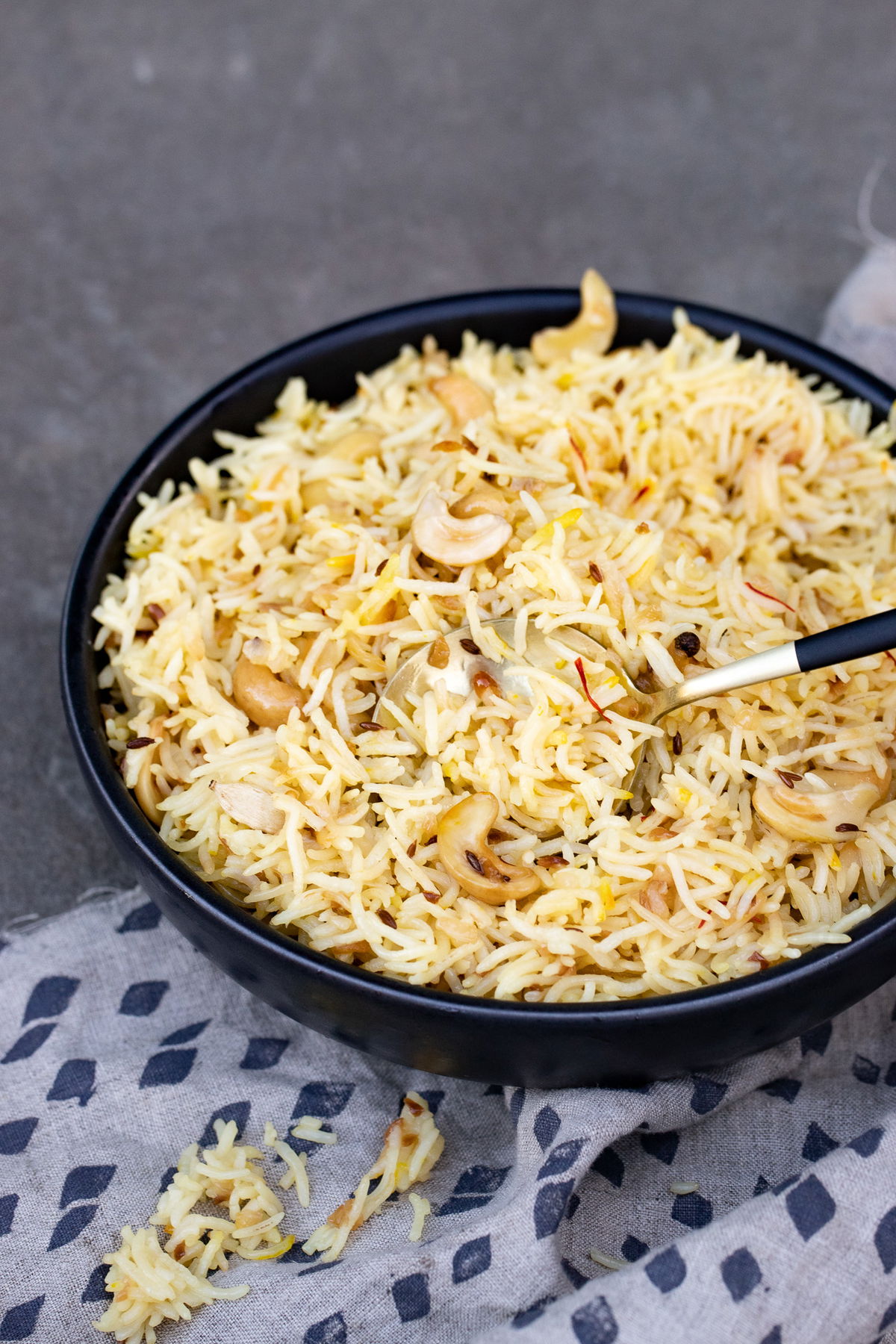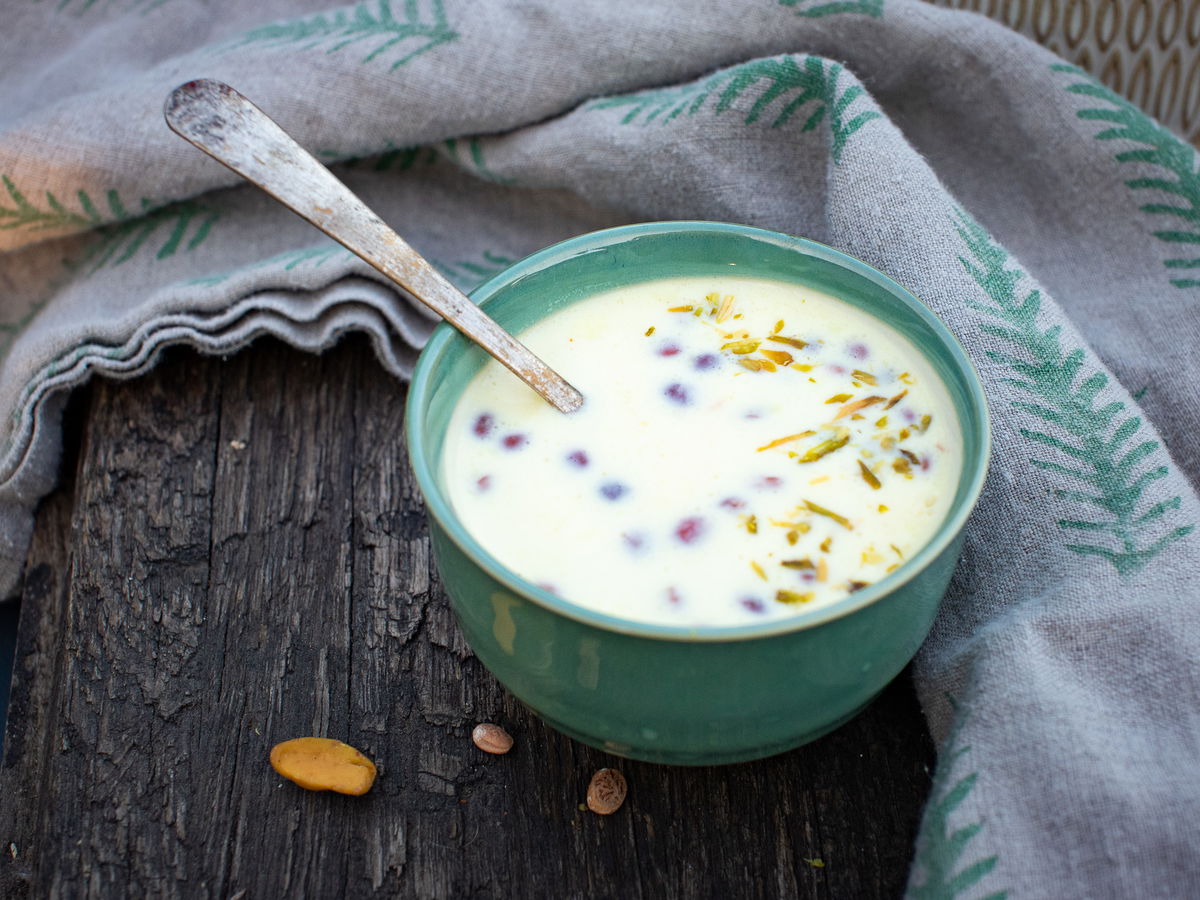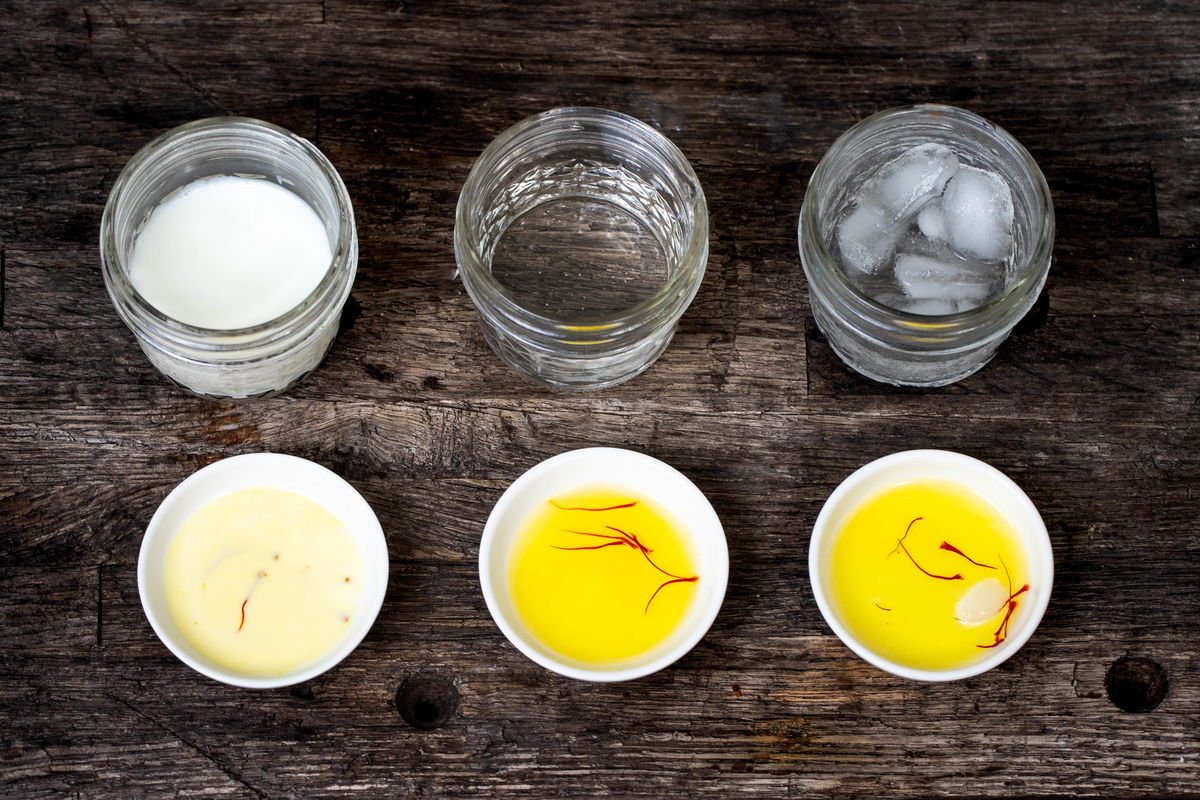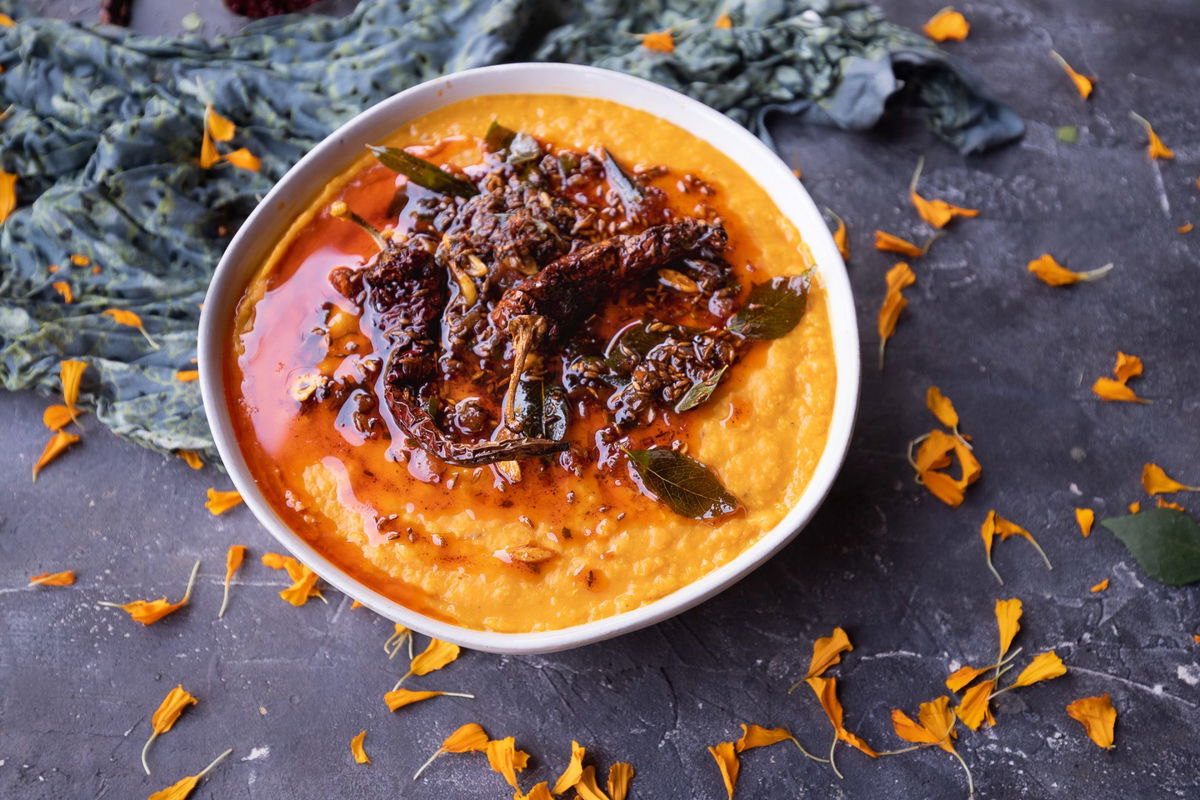Adding a pinch of saffron can elevate almost any dish. For many dishes, it imparts that signature saffron color that creates a feeling of warmth and richness. The taste of saffron is complex, with floral, sweet, and earthy notes.

It has been used in Indian cooking for hundreds of years and is an integral part of many desserts and rice dishes.
Saffron in India
Saffron, or kesar, is first mentioned in Indian texts around 500 BCE. In India, it was first cultivated in Kashmir around 500 CE. Kashmir remains an important world-growing region for saffron to this day, although 70% of the world’s saffron comes from Iran.
Even though it is not native to India, Saffron has become an integral part of Indian culture. The Indian flag has 3 stripes: saffron, white, and green. The saffron stripe covers the top third of the flag and is said to represent courage and sacrifice. The color saffron is associated with purity and abstinence in Hinduism and is frequently used by Hindu nationalist parties as part of their symbolism.
Ayurveda
Saffron is highly prized in Ayurveda. Ayurveda describes saffron as beneficial for digestion, skin, hair, and mental well-being. It is considered a warming spice.
In the 16th century, Bhavamishra, a much revered Ayurvedic physician, described saffron as a cure for syphilis, a “white man’s disease.”
The Most Expensive Spice

Saffron is known as the most expensive of all spices. That is because it takes so much labor to harvest. Saffron is unusual as a spice because it is made up of the stigma and styles, called threads, of the saffron crocus flower.
These threads are delicately plucked from the saffron flower, then dried and packaged. Each saffron flower only produces 3 threads. One ounce of saffron takes over 4,600 flowers!
How to Buy Saffron
Considering how expensive saffron is, it can be exceptionally frustrating to purchase and cook with, only to find your saffron is sub-par.
It is important to buy saffron from someone you trust. Saffron can be adulterated by adding dyes to hide inferior saffron or fillers like safflower may be added to bulk up the threads.
You know your saffron is good if you open the package and it smells fruity and sweet. Good saffron has a delightful aroma. If you smell metallics and chemicals, your saffron has been adulterated.
Good saffron has nice, long, intact threads. The longer the threads, the better.
Good saffron is mostly red, with some yellowing at the base of the threads. Substandard saffron will have too much yellow. If the saffron has been dyed to hide the yellow part, the saffron will appear too uniform in color. There will be too much red. You might even notice red on the sides of the packaging where the dye has bled.
Uses for Saffron
Saffron is prized for its complex flavor and the bright yellow color that makes it a food dye. Many people use saffron to color rice yellow, however, I sometimes prefer to use turmeric, which is more effective but does lack the distinctive flavor and aroma. Across the world, many bakers have replaced saffron with yellow food coloring, such as in traditional Swedish saffron buns, because saffron is so expensive.
Saffron finds its way into many Persian-influenced dishes, such as biryani and sweet rice.
It’s not super common, but my family adds it to our chai masala, which gives the chai a beautiful aroma along with a feeling of elegance and luxury.

Saffron is used in savory dishes like saffron rice, biryani, and saffron chicken. It gives the meat a characteristic yellow hue and a warm fragrance.
It is also used to give sweet desserts a golden color and luxuriousness. Saffron is featured in shrikhand, kulfi, mithai, sweet rice, doodh pak, and kheer.

Kesar Pista, or pistachios and saffron, is a classic flavor combination popular across South Asia. In my mind, this is a very Indian combination because I grew up with it, and Snickers now sells a kesar pista candy bar in the Indian market, but it likely came to India by way of Iran.
Blooming Saffron

It needs to be bloomed to get the most flavor and color out of the saffron. Persians do this by crushing it with a pinch of sugar in a mortar and pestle to form a powder. Indians usually bloom it by soaking it in hot milk for 20-30 minutes. These are only some of the ways to do this.
My favorite method for blooming saffron is to set it under an ice cube. The blooming happens as the ice cube melts. Another method is to use hot water in place of milk.
I have experimented with each of these methods many times. Most of the time, I use the ice cube method. To me, it is the simplest and works in most scenarios. But there are times when it might make more sense to use hot milk, for example, if you want to add hot milk to your recipe.
In other cases, there is no need to bloom the saffron as an extra step. When I make doodh pak or kheer, for example, I don’t bloom the saffron before adding it to the dish because it can bloom as the dish cooks.
